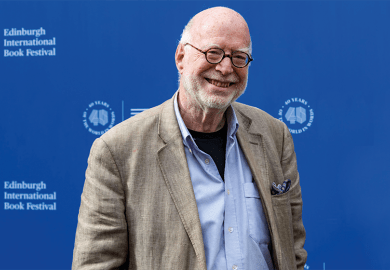Contemporary Arab artists offer a nuanced critique of the post-9/11 civilisational discourses favoured by the mainstream media. They can also reject what novelist Sinan Antoon has termed a “forensic focus” on the Arab world that seeks explanations for radical Islamism, sectarian violence or “the veiled Muslim woman”. However, limited creative infrastructure and dependence on international funding have profound effects upon what Arab art is produced and circulated.
In Hanan al-Cinema, media theorist Laura Marks focuses on the ways “one of the world’s most impressive bodies of experimenting cinema” manages to evade ideology and touch discerning spectators. She “pits the molecular against the molar”, emphasising creative networks and artistic evolution, even in contexts of cultural constraint.
Non-commercial time-based visual media tend to be “pre-political”: they foreground the present as a “flickering” moment resisting predetermined outcomes. One can be sceptical about politics in places where mass uprising tends to result in the same old repression. But the “affection-image”, which flashes between perception and (barely possible) action, makes visual encounters “vibrate with possibility”.
This book’s Arabic title and English subtitle stress the minor, microcosmic, intensely local and personal, and indicate a translational gap that can be bridged by a sensitive reader/viewer. “Hanan” is a capacious feeling-response encompassing unlimited tenderness, compassion, generosity and devotion, and Marks shows how concealing and revealing the body are acts of love as well as violence. She defines film as “a body that makes contact between bodies” (as she has argued since 2000’s The Skin of the Film: Intercultural Cinema, Embodiment, and the Senses), and encourages an empathic “ethics of reception” in the reader/viewer.
But this is no touchy-feely book. Building on her 2010 work Enfoldment and Infinity: An Islamic Genealogy of New Media Art, Marks explores a dialectic of enfolding histories and unfolding “minor” moments. A critical combination of Gilles Deleuze’s theory with Shia and Sufi thought illuminates how art “cuts through convention and gets close to something newly emerging, to life itself”.
The book’s accessible synthesis of esoteric ideas is impressive,and it offers copious examples, although a filmography is frustratingly lacking. Marks does not aim to give a survey, but rather produces a mosaic: themes and production/reception techniques radiate across conceptual essays (some previously published), directorial case studies and many images.
For me, the most accessible chapters – perhaps because they also discuss more accessible feature-length films – are those that focus on the Arab road movie as a new cinema of the desert, set on asphalt; on work that creates archives composed of absences, “prehensions” (images before frames) and singularities; and on algorithmic and “glitching” networks in which meaning is produced and can (sometimes) be decrypted.
Hanan al-Cinema dwells on works more likely to be shown in art galleries than arthouse cinemas. However, some of the artists discussed, including Mona Hatoum and Jananne Al-Ani, are well known in the UK, and experimental Arab art is becoming more visible here thanks to the efforts of curators such as Omar Kholeif, venues in London including the Mosaic Rooms and the Arab British Centre, and events such as the Nour Festival of Arts and Shubbak, the biennial festival of Arab culture.
In any case, exposure is not the only point of this book. Affectionately and affectingly, it offers critical devotion and creative reciprocity.
Lindsey Moore is senior lecturer in the department of English, Lancaster University. She has written extensively on Middle Eastern literature and visual media.
Hanan al-Cinema: Affections for the Moving Image
By Laura U. Marks
MIT Press, 416pp, £20.95
ISBN 9780262029308 and 2331067 (e-book)
Published 6 November 2015
Register to continue
Why register?
- Registration is free and only takes a moment
- Once registered, you can read 3 articles a month
- Sign up for our newsletter
Subscribe
Or subscribe for unlimited access to:
- Unlimited access to news, views, insights & reviews
- Digital editions
- Digital access to THE’s university and college rankings analysis
Already registered or a current subscriber? Login




